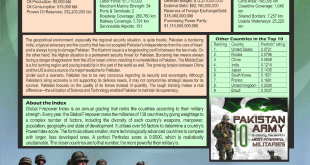“States are interested only in a balance which is in their favor. Not an equilibrium, but a generous margin is their objective. There is no real security in being just as strong as a potential enemy; there is security only in being a little stronger.”
— Nicholas John Spykman
Introduction
Balance of power, in international relations, is the post-ure and policy of a nation or group of nations protecting itself against another nation or group of nations by matching its power against the power of the other side. States can pursue a policy of balance of power in two ways: by increasing their own power, as when engaging in an armaments race or in the competitive acquisition of territory; or by adding to their own power that of other states, as when embarking upon a policy of alliances.
Definition
According to Hartman, balance of power may be described as “a system in the sense that one power bloc leads to the emergence of other and it ultimately leads to a network of alliances.”
According to Lord Castlereagh, “The maintenance of such just equilibrium between the members of the family of nations as should prevent any of them becoming sufficiently strong to impose its will upon the rest”
Morgenthau’s Views
Hans J. Morgenthau attached four different meanings to the term:
- As a policy aimed at certain state affairs at bringing about a certain power distribution;
- As an actual state of affairs in which power is distri-buted among several nations with approximate equality;
- As an approximately equal distribution of power; and
- As any distribution of power
Types of Balance of Power
1. Simple or Complex
If the balance of Power aims at preservation of safety of the nationalities of the world it is known as simple balance of power. However, it is considered complex if it concentrates on the preservation ofpeace due to warring position of the two nations.
2. Local, Regional or Worldwide
If the balance of power seeks to checkmate only one power or state that poses a threat to the freedom of the neighbouring states, it is regarded as local. If the aim is to maintain balance in a particular geographical or political region, it is called regional balance of power. However, it is regarded as worldwide if it concerns more than one region.
3. Rigid or Flexible
A balance of power is rigid if two groups of states take a particular stand and are not willing to deviate from that. If the member states change their alliances and seek fresh ones due to changed circumstances, the balance of power is flexible.
Techniques to Pursue Balance of Power
1. Alliances and Counter-alliances
Entering into alliance(s) has been the traditional instrument to strengthen one’s position vis-à-vis the opponent. Alliances are of two types: offensive and defensive. The essentials of stable and long-lasting alliances are enough power to achieve the purpose through aggression or defence; common interest of the allies; strategy, geography, common ideologies, cultural similarities, etc. Alliances generally lead to the formation of counter-alliances, e.g. Triple Alliance (1882) vs. Triple Entente (1907).
2. Compensations
Territorial Compensations were a common method for maintaining a balance of power in 18th and 19th centuries. These have frequently been made by strong powers at the expense of weaker ones, and, almost invariably, by victor nations at the end of the war.
3. Partition
Partition can also be used an instrument for the maintenance of balance of power. Usually, the major powers divide the territory in such a way that there remains no danger of any one of them acquiring a predominant position. Thus, Poland was partitioned between Russia, Prussia and Austria-Hungary in1772.
4. Armament and Disarmament
Military preparedness is the best means of national defence. This policy is bound to lead to arms race .The advancement in science and technology as well as the methods of warfare have increased the fear of destruction. To attain the balance of power, consistent efforts at disarmament are essential. Nuclear Proliferation Treaty (NPT) is the tool to maintain the balance of power after the World Wars.
5. Intervention and War
These two techniques are usually adopted as a last resort. Intervention is a dictatorial interference in the internal affairs of another country by a powerful nation in order to extract some specific concessions. Italy and Germany intervened in the Spanish Civil War in favour of General Franco.
6. Divide and Rule
This device has been resorted to by nations who want to keep their competitors weak by keeping them divided. This is a time-tested policy and was employed by the Romans to maintain their control over scattered people.
7. Buffer State
Buffer states are of great importance because of their cushioning effect between great powers. Owing to their interest in the preservation of equilibrium of power, the two adjoining states agree to follow a policy of non-interference towards the in-between small states.
8. Neutralization
Sometimes a country is neutralized to create a sort of buffer between two powerful countries and they pledge not to attack it or unnecessarily interfere in its affairs. Thus Belgium was neutralized in Europe.
Conclusion
The Balance of Power has not attempted to preserve the peace but has resulted in an unending power struggle among the states that has divided the world into hostile camps. The existence of multiple state system necessitates its preservation either through ‘collective security’ or through the ‘balance of power’. Palmer and Perkins argue: “As long as the nation state system is the prevailing pattern of the international society, balance of power policies will be followed in practice, however roundly they are condemned in theory. In all probability, they will continue to operate, even if effective supranational groupings on a regional or, world level are formed”
 Jahangir's World Times First Comprehensive Magazine for students/teachers of competitive exams and general readers as well.
Jahangir's World Times First Comprehensive Magazine for students/teachers of competitive exams and general readers as well.



